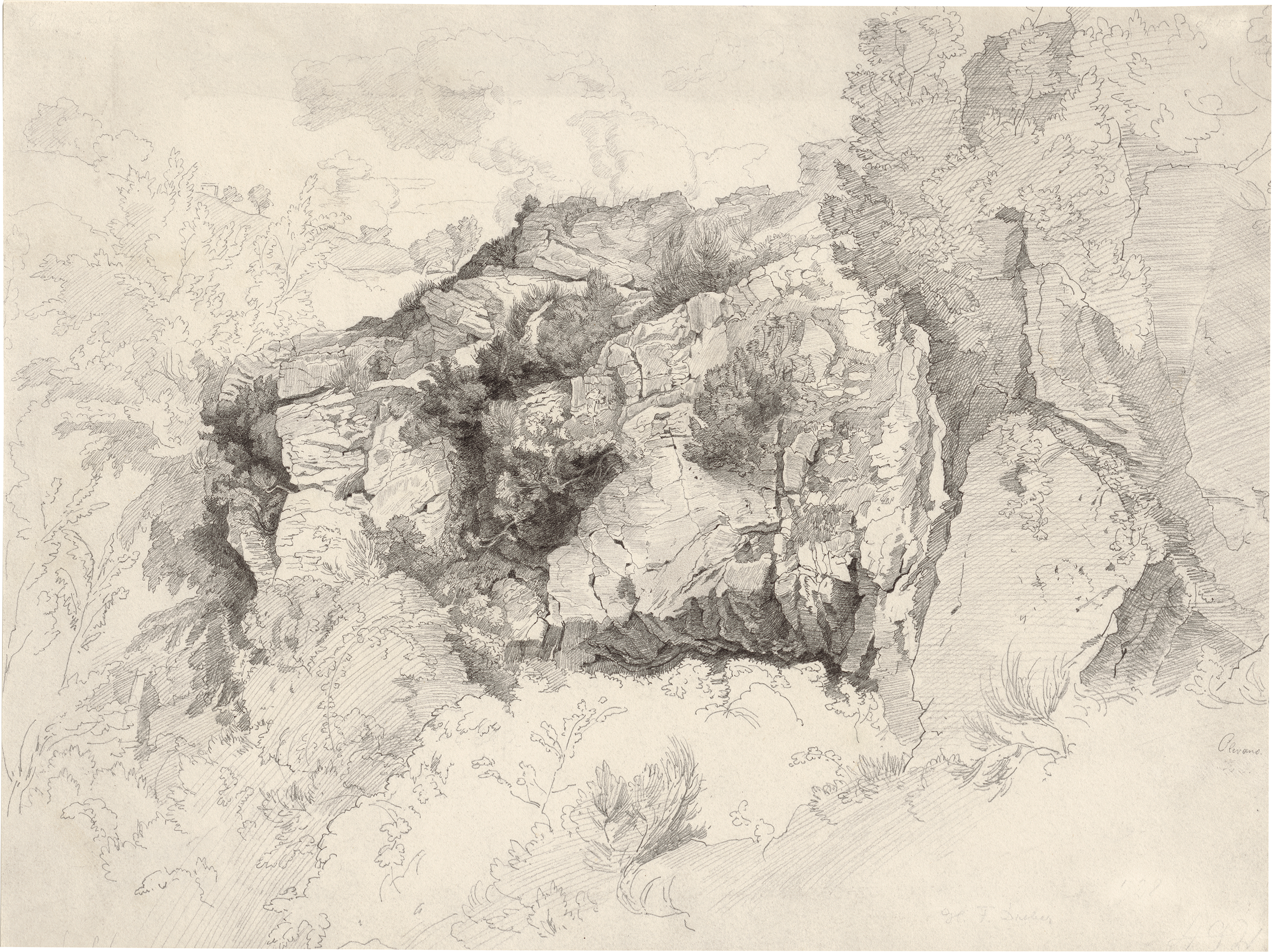Loading the page ...
Heinrich Dreber
(known as Franz-Dreber, 1822 Dresden – 1875 Anticoli di Campagna)
Layers of Rock near Olevano. Pencil on wove paper. 35.2 x 47.3 cm. “Olevano” inscribed by the artist in the right-hand margin, “H. F. Dreber” inscribed (faded) on the right below the image. Circa 1847–48.
Heinrich Dreber, also known as Franz-Dreber, began his studies under Adrian Ludwig Richter at the Dresden Academy in 1836. Blessed with a small inheritance from his great-grandmother, Dreber set off in June 1843 on his journey to Italy, from which he was never to return home. In Rome the artist initially joined the circle around Johann Christian Reinhart and thereafter lived a somewhat secluded life. Dreber’s sojourns in the Roman Campagna, the Alban Hills and the Sabine Mountains were a major source of artistic inspiration, especially in the villages of Subiaco and Olevano, where the artist spent the summer months of 1847 and 1848. Some of Dreber’s finest landscape studies arose in those two years. This region of great scenic beauty provided the artist with numerous motifs, which he captured in mostly large-format studies. These nature studies, which the artist neglected entirely after 1850, supplied him with a repertoire of motifs for the paintings he made later in his studio in Rome.
The present large-format drawing painstakingly depicts the karstic rocks, in between which sprout a few undemanding plants and bushes. The masterfully executed sheet is of the utmost graphic delicacy and demonstrates Dreber’s great dexterity with the pencil. Transparent, loosely sketched parts alternate with dark, densely hatched areas, creating an extremely subtle chiaroscuro effect and tremendous atmospheric penetration. The artist has captured the shimmering light of a warm summer day in virtuoso style. The Kupferstichkabinett in Berlin has a number of studies with rocky landscapes near Olevano which are closely related in style. Although Dreber received little public recognition during his lifetime, he nonetheless exerted considerable influence on contemporaries such as Arnold Böcklin, Friedrich Preller the Younger and Edmund Kanoldt. From the renowned collection of Eugen Roth (1895–1976), Munich.
Contact us for further information